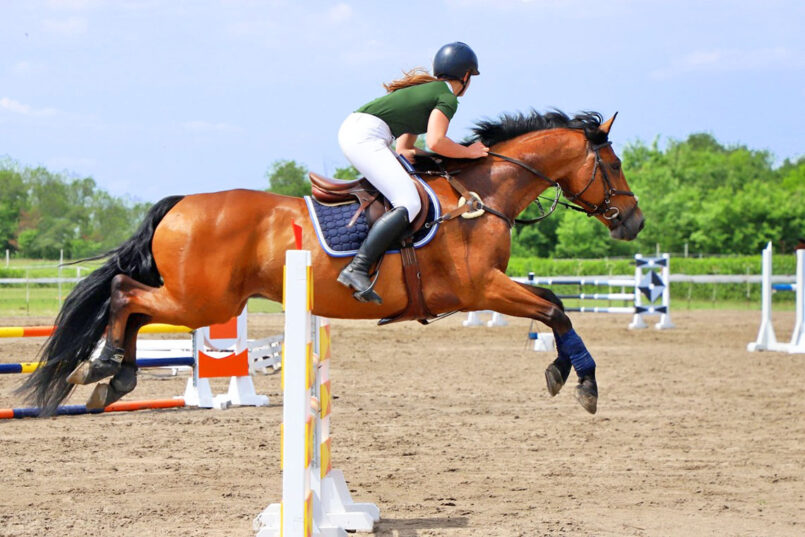Drainage and footing are two important characteristics to consider when planning for and excavating for an outdoor equestrian arena. Proper drainage for an arena ensures a long life, stability for the surface, and lower maintenance costs. Secure footing is required to protect the health and safety of horses and riders.
In all cases, the excavation includes leveling and compaction of the site to insure a level solid base; grading the site according to the location of the arena.
Grading for Drainage
For correct drainage we grade a slight and gentle slope so that water is encouraged to run off the arena. The most common approach is to create a modest crown down the center line of the arena and have drains running along each side to collect the water and carry it away.
Herringbone drains can also be installed across an arena to carry water to the outside of the arena in situations where there might be a requirement for large drain capacity. These drains are placed in a sublayer that remains porous when compacted. Geotextiles are used to cover these drains to prevent other materials used in the arena’s construction from entering the drainage system.
The arena foundational base is also built with stone to allow surface water to drain and soak away so that the arena doesn’t become soggy. We also grade a swale or berm around the site to divert surface water away from the arena.
Arena Surface Materials
There are different types of bases for horse arenas depending on the usage. For instance, jumping requires a different surface than dressage because the action of jumping places more stress on the body of the horse and this can partly be absorbed by the arena surface.

Different types of footing are required depending on the main use for the arena. Our recommendations are:
- Pleasure – 10% fiber, 90% GEO textile – compact roll three inches of screening, followed by applying three inches of footing.
- Dressage – 15% fiber, 85% GEO textile – compact roll three inches of large aggregate stone, geotextile fabric is applied, three inches of screening is compact rolled, followed by three inches of footing.
- Jumping – 30% fiber, 70% GEO textile – install drain pipe around the arena to direct surface water away from the site, compact roll three inches of large aggregate stone, geotextile fabric is applied, three inches of screening is compact rolled, followed by three inches of footing.
Footing varies according to use and your personal preference. Custom blends are created for specific needs including; sand blends, felt / fiber combinations, and blends that include rubber.
For the best equestrian arena experience we recommend the OTTO Sport Perforated Mat System. This perforated matt removes excess water, retains moisture, provides cushion, improves cupping and rebound, and saves time and money over the long run.
